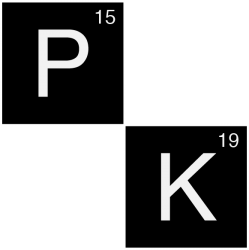“Time it takes for the plasma concentration or the amount of drug in the body to be reduced by 50%”
Descriptio
By definition, the plasma concentration of a drug is halved after one elimination half-life. Therefore, in each succeeding half-life, less drug is eliminated. After one half-life the amount of drug remaining in the body is 50% after two half-lives 25%, etc. After 4 half-lives the amount of drug (6.25%) is considered to be negligible regarding its therapeutic effects.
The half-life of a drug depends on its clearance and volume of distribution. The elimination half-life is considered to be independent of the amount of drug in the body.
Clinical implications
Half-life determines the length of the drug effect. It also indicates whether accumulation of the drug will occur under a multiple dosage regimen and it is essential to decide on the appropriate dosing interval.
Chart Pharmacokinetics
Related terms
Elimination rate constant ( λ ): Fractional rate of drug removal from the body. This rate is constant in first-order kinetics and is independent of drug concentration in the body. λ is the slope of the plasma concentration-time line (on a logarithmic y scale).
Apparent half-life (t1/2): In some cases, such as for controlled-release preparations, the rate of decline of the drug plasma concentration is not due to elimination alone. Other factors such as absorption rate or distribution rate influence plasma concentration decay. In such conditions, the observed half-life is called apparent half-life.
Assessment
$$t_{1\over2}={\color{Pink}{ln(2)}\over{\color{RoyalBlue}{\lambda}}}={\color{Pink}{ln(2)}*{\color{RoyalBlue}{Vd}\over{\color{RoyalBlue}{CL}}}}={\color{Pink}{0.693}}*{\color{RoyalBlue}{Vd}\over{\color{RoyalBlue}{CL}}}$$
CL = clearance
λ = elimination rate constant = CL/Vd

